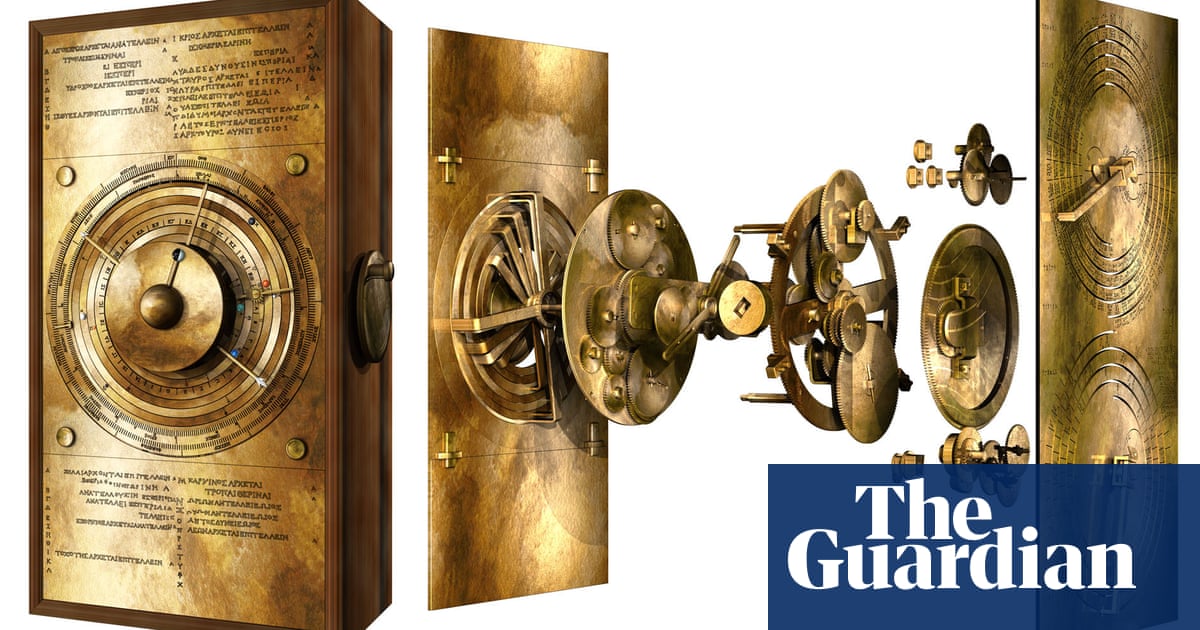
Ever since it was discovered over a century ago, scientists have marveled at the Antikythera Mechanism, a remarkable and mind-boggling astronomical calculator that survives from the ancient world.
The hand-powered 2,000-year-old device showed the motion of the universe and predicted the motion of the five known planets, the phases of the moon, and the solar and lunar eclipses. But how it achieved such impressive feats has proven devilishly difficult to untangle.
Now researchers at UCL think they’ve solved the mystery – at least in part – and have begun to reconstruct the device, gears and all, to test whether their proposal works. If they can build a replica with modern machines, they want to do the same with ancient techniques.
“We believe our reconstruction fits with all the evidence scientists have collected from the extant remains to date,” said Adam Wojcik, a materials scientist at UCL. While other scientists have made reconstructions in the past, the fact that two-thirds of the mechanism is missing has made it difficult to know for sure how it worked.
Often described as the world’s first analog computer, the mechanism was found in 1901 by sponge divers amid a cargo of treasures recovered from a merchant ship that had encountered a disaster off the Greek island of Antikythera. The ship is believed to have been stranded in a storm in the first century BC when it passed between Crete and the Peloponnese on its way to Rome from Asia Minor.

The battered fragments of corroded copper were barely noticed at first, but decades of scientific work have shown that the object is a masterpiece of mechanical engineering. Originally packaged in a wooden box one foot high, the mechanism was covered with inscriptions – a built-in user manual – and featured over 30 bronze gears connected to dials and hands. Turn the handle and the sky, as known by the Greeks, began to move.
Michael Wright, a former conservator of mechanical engineering at the Science Museum in London, pieced together much of the mechanism’s workings and built a working replica, but researchers have never had a full understanding of how the device functioned. Their efforts were not helped by the remains that survived in 82 separate fragments, making the task of rebuilding it tantamount to solving a battered 3D puzzle with most of the pieces missing.
Writing in the journal Scientific Reports, the UCL team described how they drew on the work of Wright and others, using inscriptions on the mechanism and a mathematical method described by the ancient Greek philosopher Parmenides, to elaborate new gear arrangements that planets and other bodies in the right way. Thanks to this solution, almost all gears of the mechanism fit in a space of only 25 mm deep.
According to the team, the mechanism may have depicted the movement of the sun, moon, and planets Mercury, Venus, Mars, Jupiter, and Saturn on concentric rings. Because the device assumed that the sun and planets orbited the Earth, their paths were much more difficult to reproduce with gears than if the sun was placed in the center. Another change the scientists propose is a double-ended pointer they call a “Dragon’s Hand” that indicates when eclipses will occur.

The researchers believe the work will bring them closer to a real understanding of how the Antikythera device represents the sky, but it is not clear whether the design is correct or could have been built using ancient manufacturing techniques. The concentric rings that make up the screen are supposed to spin on a set of nested, hollow shafts, but without a lathe to form the metal, it is unclear how the ancient Greeks would have manufactured such components.
“The concentric tubes at the core of the planetarium are where my belief in Greek technology falters, and where the model can falter,” Wojcik said. “Lathes would be the way today, but we can’t assume they had those for metal.”
Whether the model works or not, more mysteries remain. It is unclear whether the Antikythera Mechanism was a toy, a learning tool, or had some other purpose. And if the ancient Greeks were capable of such mechanical devices, what else did they do with the knowledge?
“Although metal is precious and would have been recycled, it is strange that nothing comparable has been found or excavated,” Wojcik said. “If they had the technology to make the Antikythera mechanism, why didn’t they extend this technology to design other machines, such as clocks?”